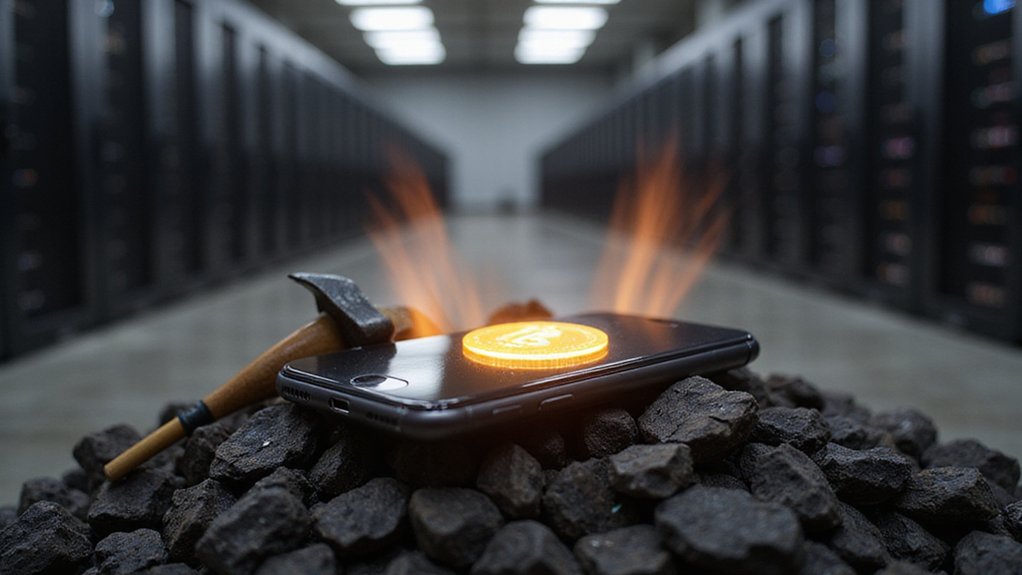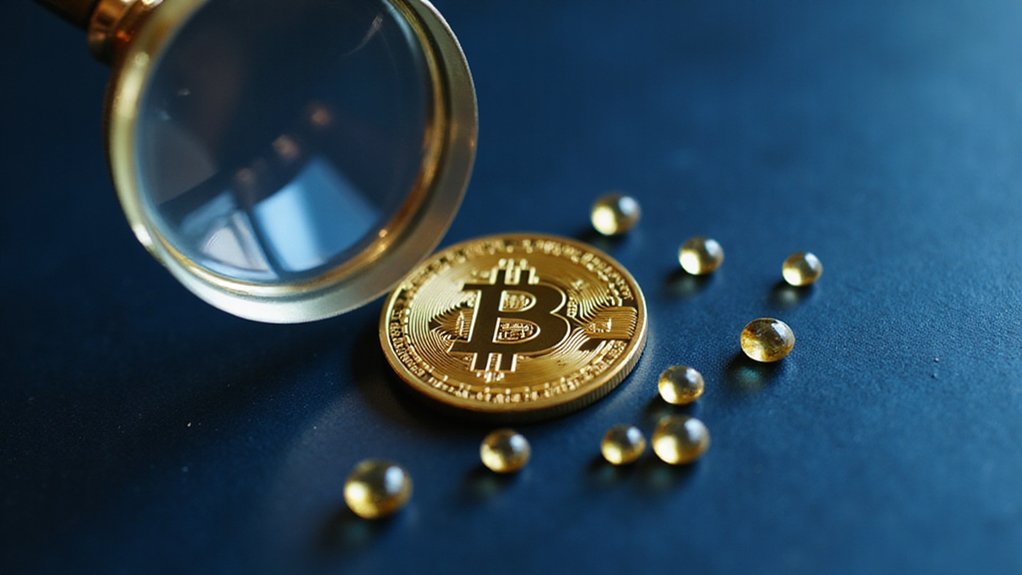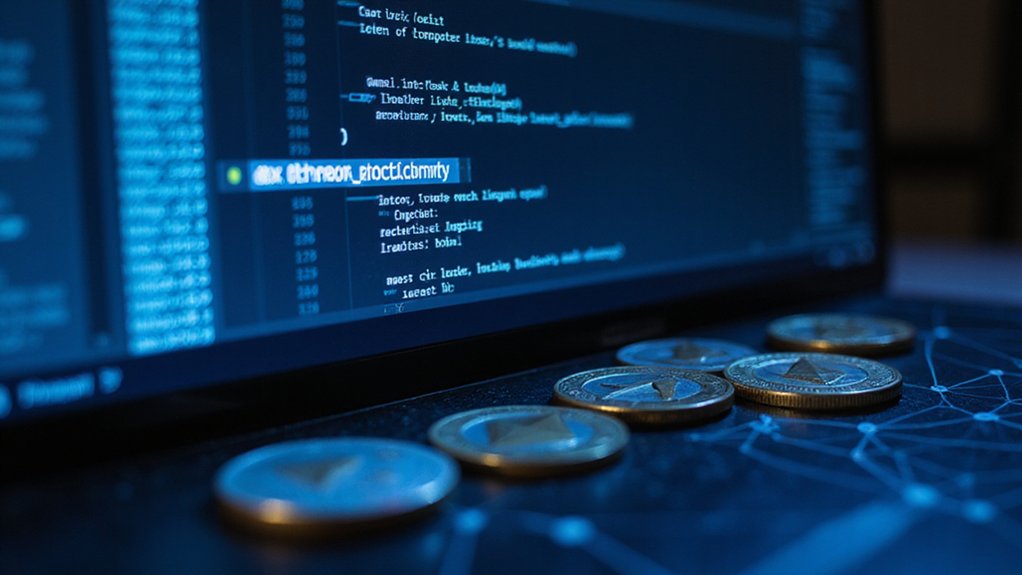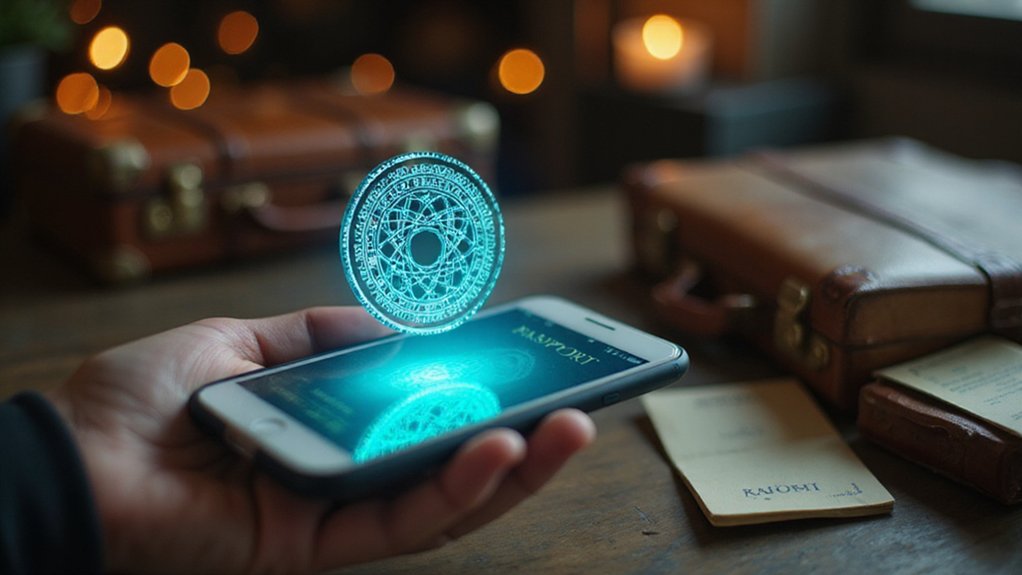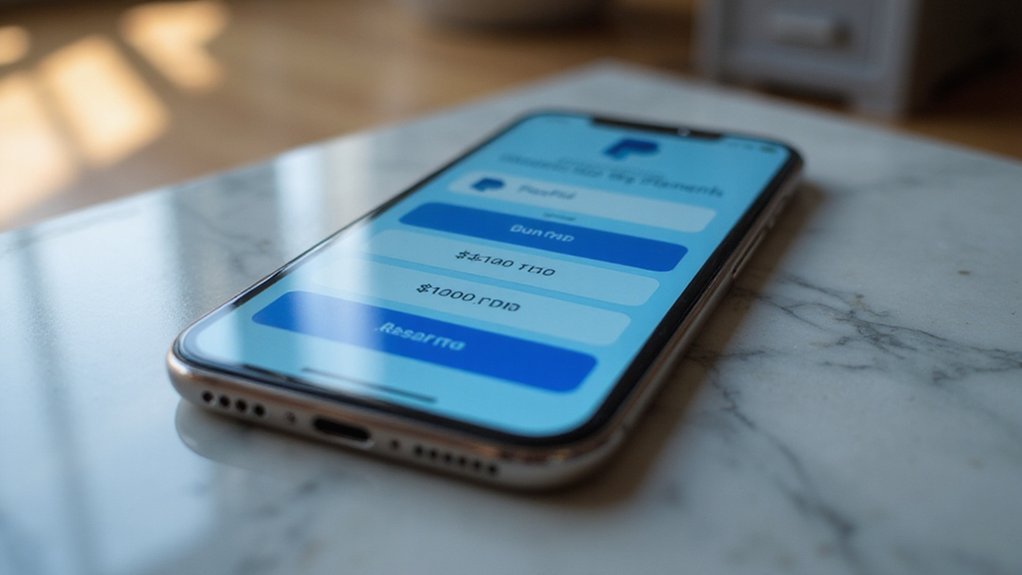Mining Bitcoin on an iPhone represents perhaps the most spectacular exercise in computational futility imaginable. While technically possible, the device’s processing power would yield earnings measured in fractions of cents—over millennia—while the electrical costs and hardware degradation exceed any potential returns by orders of magnitude. Most “mining apps” merely simulate the process or connect to remote servers. Those seeking digital fortune might find their smartphone better suited for researching more viable investment strategies.
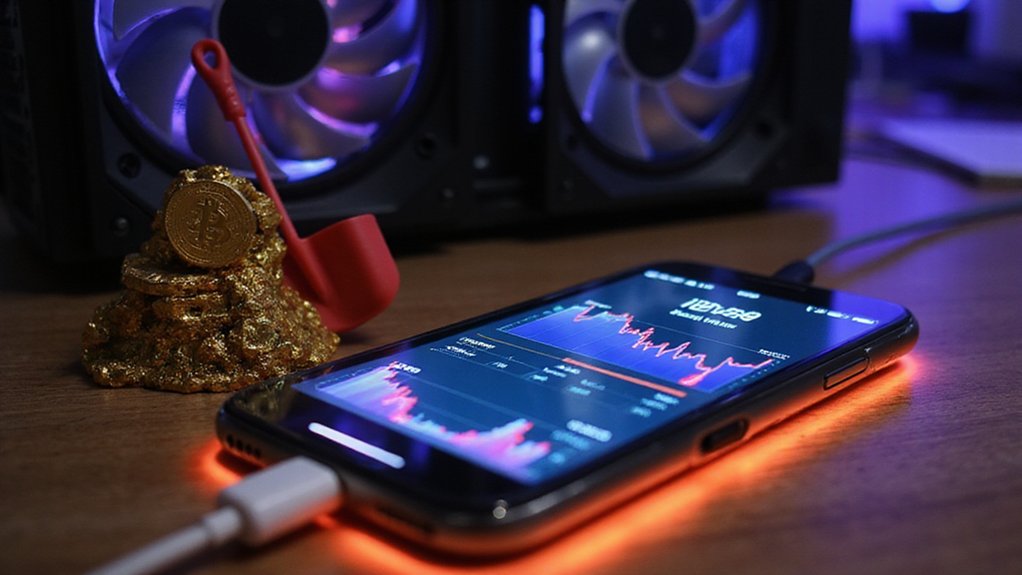
Dreams of digital gold mining with the device that fits in your pocket have captured the imagination of many cryptocurrency enthusiasts, despite the profound impracticality of such an endeavor.
The technical possibility exists, yes, but the reality bears more resemblance to using a plastic spoon to excavate Mount Everest than to any profitable mining operation.
Mining Bitcoin on an iPhone: technically possible, practically equivalent to scaling Everest with a plastic spoon.
Bitcoin’s difficulty algorithm has scaled to such heights that even dedicated ASIC hardware—devices engineered specifically for mining—struggle to remain profitable in competitive markets.
iPhone mining represents an extreme case of diminishing returns where the computational asymmetry between smartphones and purpose-built mining equipment reaches almost comical proportions.
An iPhone user might theoretically solve a block (the equivalent of striking cryptocurrency gold) in approximately the same timeframe required for several geological epochs to pass—rendering the exercise more philosophical than practical.
For the determinedly optimistic, mining pools offer a theoretical alternative, aggregating processing power across numerous devices.
Even then, an iPhone’s contribution resembles adding an eyedropper of water to Niagara Falls, with potential earnings measured in fractions of cents rather than dollars.
Meanwhile, the device endures constant processor strain, battery degradation, and heat generation that accelerates component failure.
The economics further dismantle any remaining enthusiasm.
The electrical costs alone—whether directly through battery charging or indirectly through device replacement—dramatically outpace any potential returns.
Not to mention the opportunity cost of dedicating an expensive smartphone to a task it performs with spectacular inefficiency.
Several mining apps exist in the iOS ecosystem, though many function more as educational tools or, less charitably, as exercises in digital futility.
Most mobile mining apps actually use cloud-based methods rather than direct mining, offering minimal rewards while creating the illusion of mining on your device.
As the Bitcoin network automatically adjusts difficulty every two weeks to maintain consistent block times, mobile mining becomes increasingly impossible with each adjustment period.
Others operate in murkier territory, potentially harvesting user data while providing minimal returns.¹
Similar to Android phones, some iOS apps like CryptoTab Browser allow participation in Bitcoin mining pools, but the rewards remain negligible compared to the strain on your device.
Ultimately, iPhone Bitcoin mining exists primarily as a theoretical curiosity rather than a practical venture.
Those seeking actual cryptocurrency profits would be better served directing their iPhone toward researching mining alternatives—or perhaps using the calculator app to determine how much they’re saving by not destroying their device in pursuit of microscopic returns.
¹Security concerns remain paramount, as legitimate mining already taxes device resources substantially.
Frequently Asked Questions
How Much Battery Life Does Bitcoin Mining Consume on Iphone?
Bitcoin mining on an iPhone depletes battery life at an alarming rate—typically 20-30% per hour under continuous operation.
This resource-intensive process forces the device to operate at maximum computational capacity, generating excessive heat that further accelerates battery drain.
The inefficiency is compounded by the iPhone’s inherent architectural limitations for mining operations.
Users attempting this quixotic endeavor might find their devices requiring multiple charges daily, while simultaneously accelerating long-term battery degradation through thermal stress.
Can Mining Bitcoin on Iphone Damage the Device?
Mining Bitcoin on an iPhone can indeed damage the device.
The intensive computational processes generate excessive heat that the phone’s inadequate cooling system can’t manage, potentially degrading internal components and battery life.
Sustained mining operations subject the processor to stress levels it wasn’t designed to endure, accelerating wear while risking system freezes and component failure.
Furthermore, the perpetual power drain compromises battery health—all for mining returns that would, rather ironically, fall woefully short of covering repair costs.
Are There Legal Restrictions for Mobile Bitcoin Mining?
Mobile Bitcoin mining faces few direct legal restrictions in most countries, though broader cryptocurrency regulations apply.
While industrial-scale operations attract regulatory scrutiny, smartphone mining typically flies under the radar due to its negligible energy consumption.
Jurisdictional variations are significant—eight countries have banned crypto mining outright, while states like Texas, Montana, and Oklahoma have passed “Right-to-Mine” laws offering protections.
Mobile miners should nevertheless assess local regulations, particularly in nations with extensive crypto prohibitions, before venturing on their quixotic quest for digital gold.
What’s the Minimum Iphone Model Required for Effective Mining?
¹Cloud mining services represent the only viable mobile “mining” option, though these are investment platforms rather than actual mining solutions.
How Does Iphone Mining Compare to Specialized Mining Hardware?
iPhone mining is akin to bringing a butter knife to an artillery battle.
Specialized ASICs deliver hash rates thousands of times greater (1,000+ GH/s versus negligible phone output) while consuming far less energy per computational unit.
The economics are equally stark: ASICs can generate meaningful returns despite significant upfront investment, whereas iPhone mining typically yields negative ROI once electricity costs and hardware degradation are factored in.
The smartphone’s proper role is strictly as a monitoring interface, not a mining instrument.
